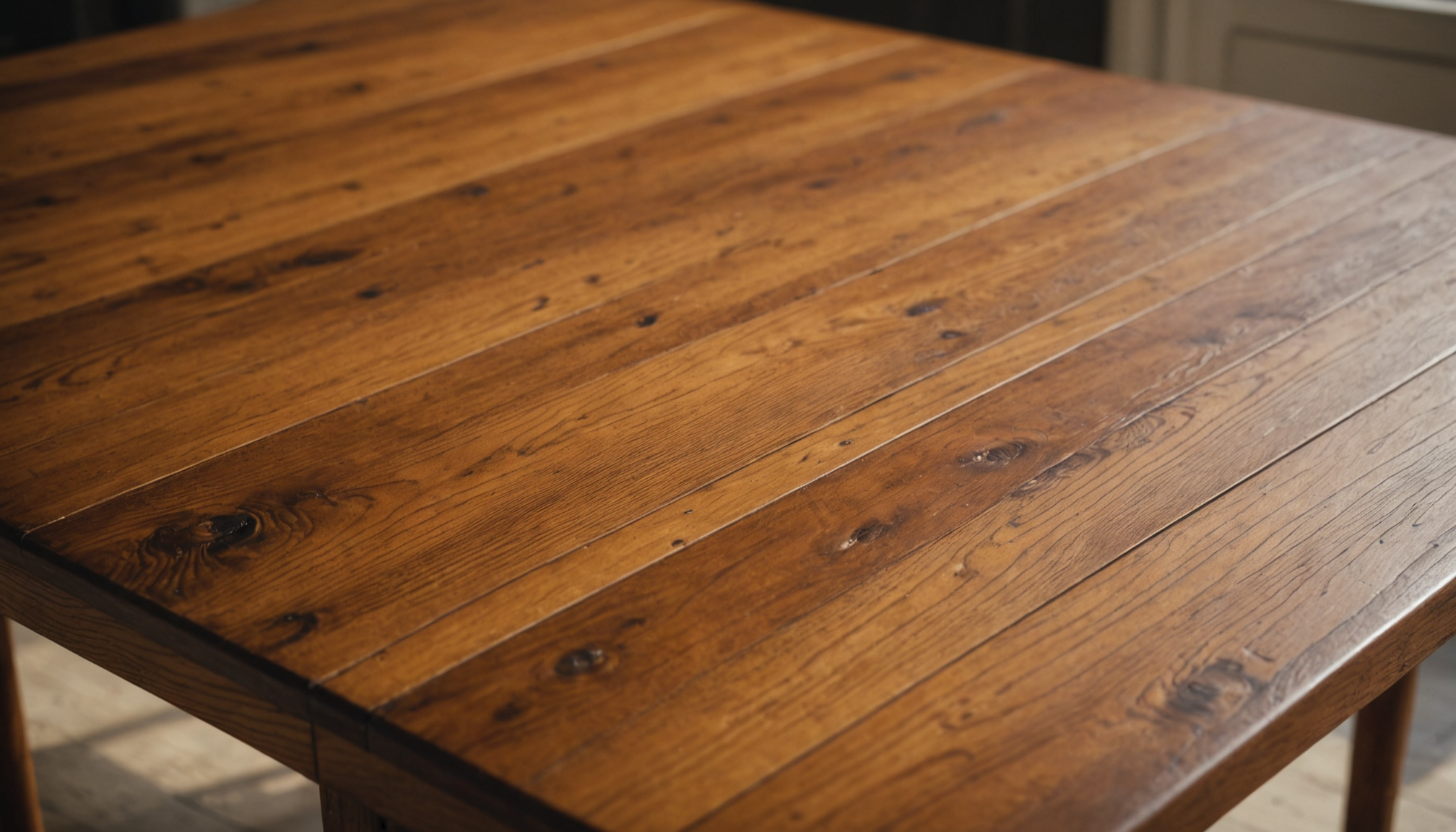When it comes to selecting an appropriate finish for wood, the variety available can be overwhelming. Understanding the different types of finishes is crucial not only for a project’s longevity and protection but also for achieving the desired aesthetic. Generally, wood finishes can be categorized into two main groups: penetrating finishes and surface finishes. Each type offers distinct benefits and characteristics that make them suitable for specific applications and preferences.
Penetrating finishes, such as oil-based finishes and stains, soak into the wood, enhancing the natural beauty and depth of the grain while providing moderate protection. These finishes are favored for their ability to highlight the natural character of the wood and are often used on furniture and interior structures. A popular choice among penetrating finishes is linseed oil, which imparts a warm, yellowish tone, darkening wood over time and offering water resistance. Similarly, Tung oil is known for its ability to resist water and mold, producing a rich, hand-rubbed appearance.
In contrast, surface finishes create a protective barrier on top of the wood surface, offering superior durability and resistance to wear and tear. These include varnishes, lacquers, and polyurethane. Varnishes are admired for their shiny, hard coat, which is ideal for wooden surfaces that must withstand heavy use, such as desk tops and cabinets. Lacquer, typically used on fine furniture, dries rapidly and forms a robust film that can be finely polished for a high-gloss finish. Polyurethane, available in both oil and water-based formulations, provides exceptional durability and is appreciated for its resistance to scratches, dents, and stains.
The following table provides a comparison of popular wood finishes, highlighting key characteristics:
| Finish Type | Protection | Appearance | Application |
| Linseed Oil | Moderate | Warm, amber-like, enhances grain | Easy, multiple coats needed |
| Tung Oil | Good water resistance | Natural, slightly amber, matte to satin | Time-consuming, multiple applications |
| Varnish | High | Glossy, transparent | Difficult, several coats recommended |
| Lacquer | High | Glossy, can be polished to high sheen | Fast-drying, requires spray system |
| Polyurethane | Excellent | Varies from satin to gloss | Easy, fewer coats required |
Each of these finishes has unique properties that determine not only the look and feel of the wood but also the level of protection it offers from environmental factors. Understanding these distinct characteristics can aid in making an informed decision that aligns not only with the functional needs but also with the desired aesthetic outcomes.
Assessing the purpose and location of the wood
When deciding on the right finish for your wood project, it is crucial to consider both the purpose and location of the wood to ensure you select an appropriate and durable finish. This involves evaluating how the piece will be used, where it will be placed, and the conditions it will be exposed to. Here’s a step-by-step approach to guide you through this assessment:
1. Determine the Functional Use:
– Identify whether the wood piece will be functional or decorative. Functional pieces such as tables, chairs, and kitchen cabinets might require a more robust finish to withstand daily use and activity.
– Consider if the wood will bear weight or be subjected to mechanical wear, which would necessitate a finish that offers high durability and abrasion resistance.
2. Evaluate the Location:
– Assess whether the wood will be used indoors or outdoors. Outdoor pieces will require finishes with enhanced protection against UV rays, moisture, and seasonal weather changes.
– Understand the specific room environment if indoors. Kitchens and bathrooms, for instance, may expose wood to higher humidity levels and require finishes that are water-resistant.
3. Consider Exposure to Elements:
– For wood that will be exposed to sunlight, such as decks or window frames, opt for finishes with UV blockers to prevent fading and discoloration.
– If placed in an area prone to dust or chemicals (like a workshop), a finish that is easy to clean and resistant to chemicals is beneficial.
4. Think About Temperature Fluctuations:
– In environments with significant temperature swings, such as a sunroom or attic, select finishes that accommodate wood expansion and contraction to prevent cracking or degradation.
5. Evaluate Safety and Non-Toxicity Needs:
– For wood that comes into contact with food, such as cutting boards or countertops, utilize food-safe finishes like mineral oil or beeswax.
– In homes with children or pets, consider finishes with low or no volatile organic compounds (VOCs) to ensure air quality and safety.
6. Factor in Maintenance Requirements:
– Assess the level of maintenance you are willing to perform. High-traffic pieces may need finishes that are easy to reapply or touch up, while low-maintenance finishes are preferable for less accessible areas.
By carefully considering these factors, you can choose a finish that not only protects and enhances the wood’s natural beauty but also aligns with its specific use and environmental demands. This thoughtful selection process helps ensure the longevity and functionality of your wood piece while achieving your desired aesthetic outcome.
Evaluating durability and maintenance needs
When choosing a wood finish, it’s important to balance the need for durability with the level of maintenance you are willing to invest in. Wood items located in high-traffic areas or exposed to harsh elements typically require more robust finishes to ensure they last over time. However, these more durable finishes may also necessitate a higher degree of maintenance to maintain their appearance and protective qualities.
Polyurethane, for example, is often favored for its exceptional durability and ease of maintenance. It forms a hard, protective barrier that resists scratches, dents, and stains, making it an ideal choice for wooden floors, tabletops, and kitchen countertops. While both oil-based and water-based polyurethane provide excellent protection, the latter tends to dry faster and has a lower level of volatile organic compounds (VOCs), making it a more environmentally friendly option. Despite its durability, proper maintenance such as gentle cleaning and occasional reapplication can extend its lifespan significantly.
Lacquers and varnishes, while also providing strong protection, might demand a bit more attention to maintain their luster. Lacquer, known for its high-gloss finish and rapid drying time, usually requires a controlled application environment—often with the use of a spray system—to prevent imperfections. Surfaces treated with lacquer or varnish should be periodically cleaned with non-abrasive materials to keep their sheen and prevent build-up that could dull the finish.
On the other hand, penetrating finishes like oils (linseed or tung) may offer more natural aesthetics while generally requiring more frequent touch-ups. These finishes penetrate into the wood fibers, which can enhance the wood’s natural beauty, but they do not form a hard top layer, hence offer less protection against physical wear or moisture. Nevertheless, they are relatively easy to repair and reapply, allowing for manageable upkeep when the surface shows signs of wear.
Another vital consideration is the environmental condition to which the finished wood will be exposed. Objects situated in humid or moist environments, such as bathrooms or outdoor furniture, should have finishes that offer both durability and water-resistance. In such scenarios, a finish like spar varnish, formulated for marine applications, can be advantageous due to its elasticity and resistance to moisture and UV rays, although it might require periodic maintenance to remain effective.
Moreover, evaluate the balance between the finish’s durability and the appearance it provides. High-gloss finishes tend to highlight imperfections and fingerprints, requiring more meticulous upkeep to maintain their pristine appearance. On the other end of the spectrum, satin or matte finishes can graciously mask dust and minor scratches, making them visually forgiving and easier to maintain in a busy household.
Ultimately, the key is to match the finish not only with the demands of its environment but also with your everyday lifestyle and the amount of care you are willing to provide. By understanding and weighing these aspects comprehensively, the selected wood finish will meet durability needs without overwhelming you with maintenance, all while enhancing the wood’s natural allure and function.
Considering aesthetic preferences and effects
When selecting a wood finish, aesthetic preferences play a pivotal role in determining the final look and feel of a piece. The finish you choose can significantly influence the visual impact of the wood, from its color and sheen to the texture and highlight of its grain patterns. With so many options available, it’s essential to consider your personal style and the overall design of the space where the wood will be featured.
If you prefer a natural look that elevates the wood’s inherent beauty, penetrating finishes like oils and stains may be your best bet. These finishes penetrate deep into the wood, enhancing its natural patterns and providing a warm, authentic appearance. For example, Tung oil offers a slightly amber tint with a matte to satin sheen, enriching the wood with a subtle glow while maintaining a more organic and raw aesthetic. Similarly, linseed oil darkens the wood over time, giving it a rustic charm that can complement both traditional and contemporary interiors.
On the other hand, if you’re drawn towards a more polished, sleek appearance, surface finishes might appeal to you. High-gloss varnishes or lacquers can give wood surfaces a mirror-like finish, imparting a modern, sophisticated vibe. These finishes highlight the wood’s grain but also reflect light beautifully, adding an element of opulence to spaces like living rooms or dining areas. However, it’s worth noting that gloss finishes require more meticulous maintenance as they can easily show dust, fingerprints, or minor scratches.
For those who prefer understated elegance, satin or matte finishes provide a subdued shine that is both versatile and forgiving. A finish like satin polyurethane offers a smooth, soft sheen that works well in a variety of settings, from cozy bedrooms to bustling kitchens, without overwhelming the senses. These finishes allow the wood to maintain its character while minimizing glare and providing a subtle backdrop to other design elements.
Another aesthetic consideration involves color. Many finishes are available in a range of hues that can alter the wood’s appearance dramatically. For instance, stains can transform a light oak into a rich mahogany or a pale maple into a deeper walnut, allowing you to customize the wood to fit your desired color palette. Whether your goal is to create a bold contrast or a harmonious blend with existing furnishings, there’s likely a finish to match your vision.
Textures, too, can vary between finishes. Some might leave a smooth, even surface, while others can be buffed to raise the grain slightly, adding depth and interest. This choice can depend on whether you want the wood piece to feel soft and sleek or if you aim for a tactile experience that invites touch and exploration.
In essence, selecting a finish based on aesthetic preferences is about balancing the visual features of color, sheen, and texture with the practical aspects of the wood’s environment and use. Keep in mind how the finish harmonizes with the room’s decor and the mood you wish to convey. Considering these elements will not only enhance your wood piece but also bring a sense of cohesion and satisfaction to the overall aesthetic of your space.
Tips for application and achieving the best results
Achieving optimal results with wood finishes hinges on both the application method and the careful preparation of the wood surface. Begin by ensuring the wood is clean, smooth, and free of any dust or imperfections. Sand the surface using progressively finer grits of sandpaper, finishing with a final pass of around 220-grit for the smoothest finish. Always sand in the direction of the wood grain to prevent scratches that could become visible once the finish is applied.
Before applying any finish, it’s advisable to use a tack cloth or a damp cloth to remove all sanding dust. This step is crucial as leftover particles can mar the final finish, leaving it uneven or rough. If staining the wood, apply a pre-stain conditioner to help ensure an even color application, especially for woods prone to blotching like pine or cherry.
For penetrating finishes like oils or stains, tools such as clean, lint-free cloths or brushes are most effective for application. When using a cloth, rub the finish in with circular motions until the wood no longer absorbs any more product. Allow it to penetrate according to the manufacturer’s recommendations before wiping off any excess. With oils, multiple coats may be required to achieve the desired depth and protection, allowing adequate drying time between applications.
For surface finishes like varnishes or polyurethanes, use high-quality synthetic or natural bristle brushes or foam applicators to achieve a smooth, even coat. Apply with long, even strokes in the direction of the wood grain, taking care to catch any drips or runs promptly. Avoid over-brushing, which can introduce bubbles that are hard to remove once dry.
Spraying may be the best option for lacquers to achieve an ultra-smooth, high-gloss finish. Ensure the wood piece is placed in a ventilated area with minimal dust. Apply lacquer in thin, even coats, allowing each layer to dry completely before lightly sanding with very fine sandpaper. A final buff with a polishing compound can enhance the gloss to a mirror-like sheen.
Regardless of the finish, temperature and humidity play a critical role in drying times and the final outcome. Work in a climate-controlled environment to reduce issues like prolonged drying times or premature curing. Follow the specific curing times for your chosen finish, as handling the wood prematurely can damage the surface, necessitating additional touch-up and reapplication efforts.
Lastly, protect the newly finished surface by allowing it to cure fully before heavy use. This might take several days to weeks depending on the specific finish. Patience during this stage ensures the finish will hold up well under everyday wear and tear, preserving not only its visual appeal but also its protective qualities. By applying these tips, you’ll ensure that the finished wood project showcases all the beauty and functionality you envisioned.
In conclusion, selecting the right finish for wood involves understanding the different types of finishes, evaluating where and how the wood will be used, and balancing durability with maintenance needs. By considering both aesthetic preferences and practical requirements, you can choose the ideal finish that enhances and protects your wood piece. Whether you’re aiming for a natural look or a high-gloss shine, the right finish will add beauty, value, and longevity to your wood projects.


